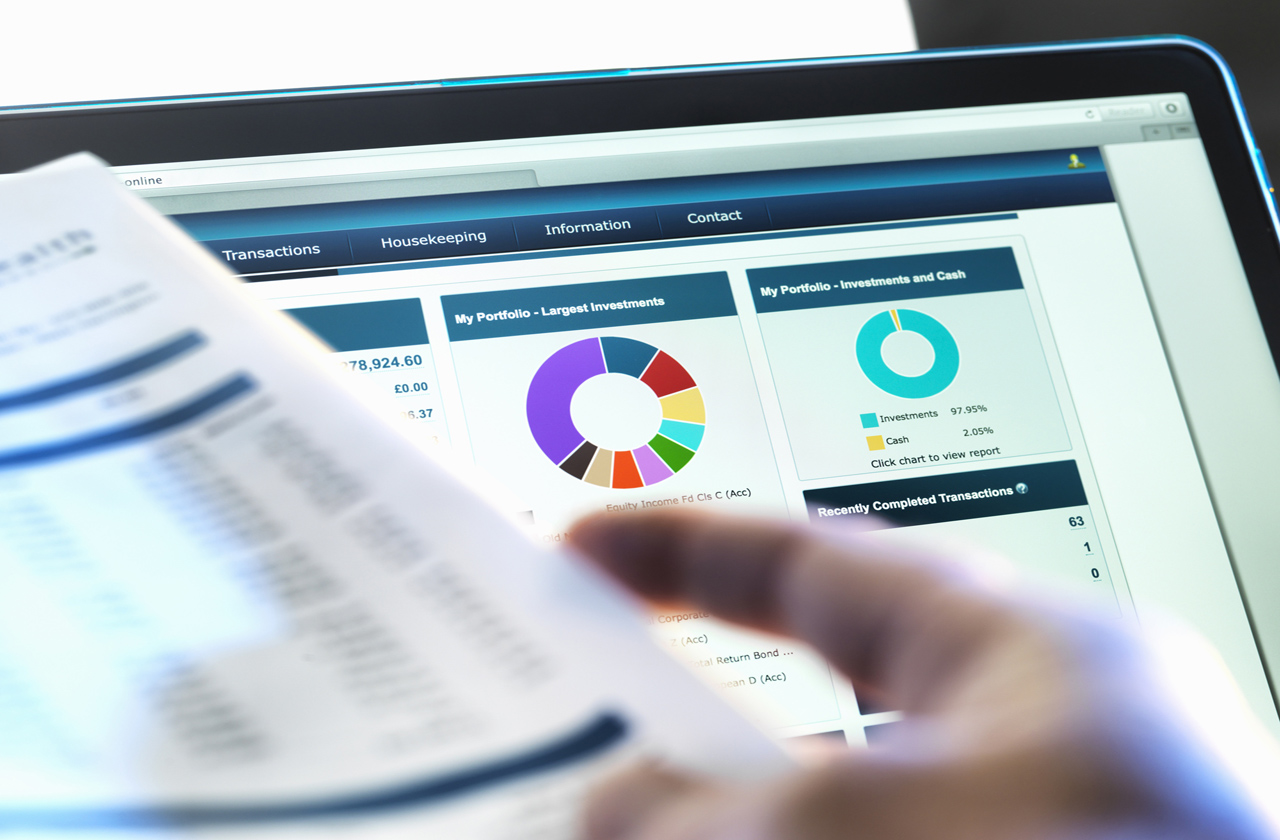Investment Moves to Consider in Times of Rising Interest Rates
The Federal Reserve has raised rates three times since December, and conservative investors have some decisions ahead. What about bonds? CDs? Dividends? Here’s what to think about.


Over the past few years — since the financial crisis of 2008 — we’ve seen interest rates compress to historic lows.
That’s been good for people with debt and those who are borrowing to buy a car or a home. But it’s problematic for careful savers and retirees looking to pull income from their investment portfolios.
A Risky Migration for Many
They paid off their mortgage, dumped their debt and put their money into safe financial vehicles, like certificates of deposit and money market accounts — only to see their nest eggs slowly crumble, thanks to inflation.
From just $107.88 $24.99 for Kiplinger Personal Finance
Become a smarter, better informed investor. Subscribe from just $107.88 $24.99, plus get up to 4 Special Issues

Sign up for Kiplinger’s Free Newsletters
Profit and prosper with the best of expert advice on investing, taxes, retirement, personal finance and more - straight to your e-mail.
Profit and prosper with the best of expert advice - straight to your e-mail.
As a result, many ended up leaving the secure savings vehicles they loved to reach for higher yields in riskier asset classes, perhaps without understanding what it could mean in the long run.
Bonds Get Bumpy
Now, as we enter what appears to be a rising-interest-rate environment (central bank policymakers have raised rates three times since December and are forecast to lift them a quarter of a percentage point once more in 2017), it could mean trouble for those who bought into funds with high-yield longer maturities.
A rise in rates can make things pretty bumpy for bond assets. We actually saw that happen rather aggressively right after the presidential election.
If that made you a bit nervous (and if it didn’t, it should have), it may be time to do a little portfolio rebalancing.
What Should Bond Investors Do?
Super-safe investors who want to stay with their bonds should look at repositioning into shorter-term (three- to five-year) bonds, which are traditionally less sensitive to rising rates than intermediate- and long-term bonds.
Floating rate notes, which typically have a two- to five-year term to maturity, also tend to behave better in a rising-interest-rate environment. FRNs have variable rates that reset periodically.
Senior Loans and Dividend Options
Another option is to pivot more into senior loans, which are loans banks make to corporations and then package and sell to investors. They’re usually secured by collateral, and if the company fails, investors are the first to be repaid — so these investments are considered less risky than high-yield bonds (although they are not risk-free).
Investors who can stomach a little more volatility may wish to move to Dividend Aristocrats, a select group of S&P 500 stocks with strong balance sheets and 25-plus years of consecutive dividend increases. These dividend growth stocks have performed well over the long term.
The Bottom Line
Now is not the time to be complacent with your income strategy.
As we enter a new era of rising rates, don’t fall victim to chasing yield and buying the biggest dividend payers. This can be an indicator of internal problems on a company’s balance sheet. The reality is, that dividend may not be around forever.
A wiser overall plan may be to invest for total return. Remember: This money is meant to last a lifetime. Yes, you want some growth to stay ahead of inflation, but you don’t want to put your retirement income at risk.
Don’t let your fears or confusion about what to do next overwhelm or paralyze you. A trusted financial professional can help you rework your strategy into something that can lower your risk tolerance while maintaining as much growth as possible.
Kim Franke-Folstad contributed to this article.
This article was written to give broad-based recommendations and ideas. Clients should discuss any proposed strategy mentioned in this newsletter with Dan & Jason to see how it aligns with your portfolio, risk & personal circumstance.
Profit and prosper with the best of Kiplinger's advice on investing, taxes, retirement, personal finance and much more. Delivered daily. Enter your email in the box and click Sign Me Up.

Dan Webster originally hails from Rochester, N.Y., and currently resides in Pawleys Island, S.C. He is a Registered Financial Consultant and is a member of the International Association of Registered Financial Consultants and the Financial Planning Association.
-
 Quiz: How Much Do You Know About Taxes on Social Security Benefits?
Quiz: How Much Do You Know About Taxes on Social Security Benefits?Quiz Social Security benefits often come with confusing IRS tax rules that can trip up financially savvy retirees and near-retirees.
-
 Are You Ready for 65? The Medicare Initial Enrollment Period Quiz
Are You Ready for 65? The Medicare Initial Enrollment Period QuizQuiz Turning 65 soon? Test your basic knowledge of Medicare's Initial Enrollment Period (IEP) rules in our quick quiz.
-
 3 Ways to Stretch the 2026 Social Security COLA For Your Budget
3 Ways to Stretch the 2026 Social Security COLA For Your BudgetThree steps retirees can take to stretch the Social Security COLA to fit their budgets.
-
 Giving Tuesday Is Just the Start: An Expert Guide to Keeping Your Charitable Giving Momentum Going All Year
Giving Tuesday Is Just the Start: An Expert Guide to Keeping Your Charitable Giving Momentum Going All YearInstead of treating charity like a year-end rush for tax breaks, consider using smart tools like DAFs and recurring grants for maximum impact all the year.
-
 Uber Takes Aim at the Bottom Lines of Billboard Personal Injury Lawyers
Uber Takes Aim at the Bottom Lines of Billboard Personal Injury LawyersUber has filed lawsuits and proposed a ballot initiative, in California, to curb settlements it claims are falsely inflated by some personal injury lawyers.
-
 A Financial Adviser's Health Journey Shows How the 'Pink Tax' Costs Women
A Financial Adviser's Health Journey Shows How the 'Pink Tax' Costs WomenFact: Women pay significantly more for health care over their lifetimes. But there are some things we can do to protect our health and our financial security.
-
 I'm a Cross-Border Financial Adviser: 5 Things I Wish Americans Knew About Taxes Before Moving to Portugal
I'm a Cross-Border Financial Adviser: 5 Things I Wish Americans Knew About Taxes Before Moving to PortugalMoving to Portugal might not be the clean financial break you expect due to U.S. tax obligations, foreign investment risks, lower investment yields and more.
-
 Show of Hands: Who Hates Taxes? The Best Time to Plan for Them Is Right Now
Show of Hands: Who Hates Taxes? The Best Time to Plan for Them Is Right NowBy creating a tax plan, you can keep more of what you've earned and give less to Uncle Sam. Here's how you can follow the rules and pay only your fair share.
-
 'Smart' Estate Planning Can Cause Huge Problems: An Expert Unravels Popular Myths
'Smart' Estate Planning Can Cause Huge Problems: An Expert Unravels Popular MythsSometimes no plan at all could be better than making these unfortunate mistakes. Don't let your best intentions mess things up for your heirs.
-
 I'm a Financial Literacy Expert: Bubble-Wrapping Our Kids Robbed Them of Resilience. Now What?
I'm a Financial Literacy Expert: Bubble-Wrapping Our Kids Robbed Them of Resilience. Now What?By raising them to think they're amazing no matter what and lifting them over obstacles, we left them unprepared to work in the real world.
-
 I'm a Financial Planner: If You're a High Earner, You Need an 18-Month Safety Net
I'm a Financial Planner: If You're a High Earner, You Need an 18-Month Safety NetNo job seems to be safe in this age of AI. If you make a larger-than-usual salary, then you need to have a larger-than-usual emergency fund. Here's why.